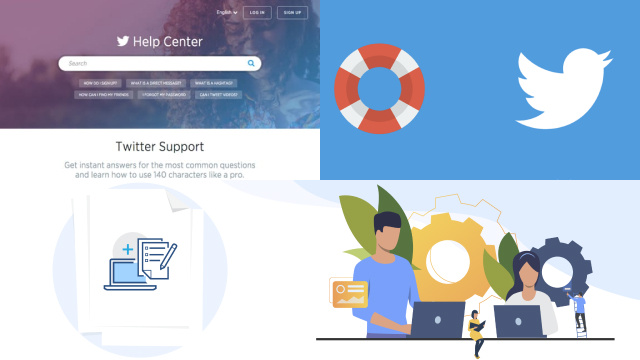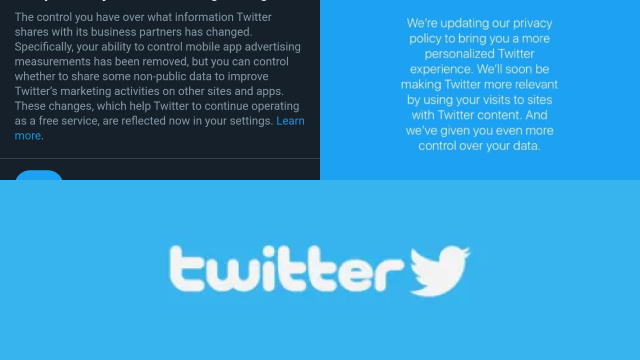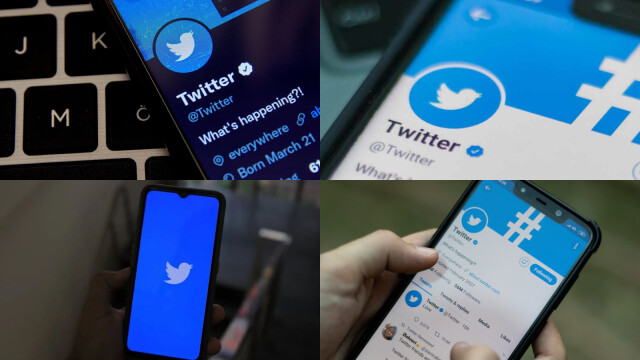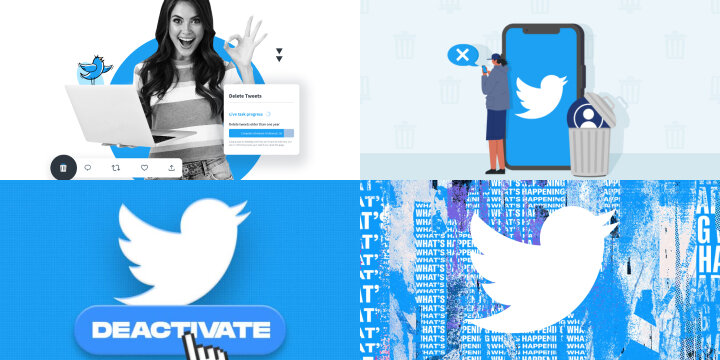Exploring the Challenges: Why Can’t You Access Your Old Twitter Account?
Losing access to an old Twitter account can be frustrating and perplexing. Countless users find themselves locked out, struggling to regain control over their digital presence. Several factors contribute to this common predicament.
- Forgotten Credentials: One of the primary reasons users can’t access their old accounts is simply forgetting their login credentials. Without accurate information, it becomes an uphill battle to regain control.
- Email or Phone Number Changes: If you’ve changed your email address or phone number associated with your Twitter account and failed to update it, recovering access can be arduous. Verification codes and account recovery options rely on these registered details.
- Hacked or Suspended Accounts: Unscrupulous individuals may compromise your account’s security, leading to a suspension or loss of access. In such cases, the road to regaining control can be complicated and time-consuming.
- Inactive Accounts: Twitter may disable access to accounts that have been inactive for an extended period. While this measure aims to maintain security, it can pose a significant hurdle when attempting to regain access to an old account.

Overcoming these challenges often requires patience, thorough documentation, and effective communication with Twitter’s support team. By understanding the underlying reasons for losing access, users can take proactive steps to mitigate future issues and safeguard their online presence.
Method 1: Recovering Access to Your Old Twitter Account
If you find yourself locked out of your old Twitter account, there are steps you can take to regain access. Here’s a method that can help you reclaim control:
- Account Recovery Form: Start by visiting the Twitter account recovery page. Fill out the necessary details, such as the username or email associated with the account. Provide any additional information or details that may help verify your identity.
- Verification Process: Twitter may require you to go through a verification process to confirm your ownership of the account. This can include providing personal information, answering security questions, or providing proof of account ownership through email verification.
- Communication with Twitter Support: If the automated recovery process doesn’t work or you encounter further difficulties, reach out to Twitter support. Explain the situation clearly, provide relevant details, and request their assistance in recovering your old account.
Remember to be patient throughout the process, as account recovery can take time. Providing accurate information and promptly following any instructions from Twitter support can increase your chances of regaining access to your old Twitter account.
Method 2: Contacting Twitter Support for Assistance
When all attempts to regain access to your old Twitter account fail, it’s time to seek assistance from Twitter’s support team. Here’s how you can contact them for help:
- Twitter Support Channels: Visit the official Twitter Help Center to explore the available support options. Look for the contact information or support forms provided by Twitter.
- Clear and Concise Explanation: When reaching out to Twitter support, provide a clear and concise explanation of your situation. Include relevant details such as the username, email associated with the account, and any additional information that can help verify your ownership.
- Patience and Follow-Up: Twitter support receives numerous inquiries daily, so it’s important to be patient while waiting for a response. If you don’t receive a timely reply, consider sending a polite follow-up message to ensure your case is still being addressed.

By directly contacting Twitter support and clearly explaining your issue, you increase the chances of receiving the necessary guidance and assistance to regain access to your old Twitter account.
Method 3: Deleting an Old Twitter Account without Access
Deleting an old Twitter account without access can be challenging, but there are a few steps you can take to minimize its impact:
- Exhaust Account Recovery Options: Before considering deletion, make sure to exhaust all available methods to regain access to your old Twitter account. Refer to Method 1 and Method 2 for potential solutions.
- Inform Twitter Support: Reach out to Twitter support and explain the situation. Request their assistance in deleting the account since you no longer have access to it. Provide any relevant details or evidence to prove your ownership of the account.
- Privacy and Data Removal: Even if you can’t delete the account, focus on minimizing any personal information or sensitive data associated with it. Remove any public tweets, revoke third-party access, and review privacy settings to ensure minimal exposure.
While deleting an old Twitter account without access may not always be possible, taking steps to protect your privacy and limit potential risks is essential. By engaging with Twitter support and being proactive in managing your account’s data, you can mitigate the impact of an inaccessible account.
Important Considerations: Privacy and Data Removal
When dealing with an old Twitter account you cannot access, it’s crucial to consider privacy and data removal. Here are some important points to keep in mind:
- Publicly Visible Information: Review your old Twitter account for any publicly visible information, such as tweets, profile details, or media. Delete or remove any content that you no longer wish to be associated with your account.
- Third-Party Access: Check for any third-party applications or services that had access to your Twitter account. Revoke their access to ensure your data is no longer being shared or utilized by external sources.
- Data Retention Policies: Understand Twitter’s data retention policies and how long they retain your account data. While you may not be able to delete the account, knowing the duration of data retention can help you plan accordingly.
- Personal Information Protection: Take steps to protect your personal information associated with the account. Update or remove any email addresses, phone numbers, or other sensitive details to minimize the risk of misuse.

By considering these factors, you can proactively protect your privacy and limit the potential impact of an old Twitter account you cannot access.
Tips for Preventing Future Account Access Issues
To avoid future account access issues on Twitter, it’s essential to implement preventive measures. Consider the following tips:
- Strong and Unique Passwords: Create strong and unique passwords for your Twitter account. Avoid using easily guessable information and consider using a reliable password manager to securely store your credentials.
- Two-Factor Authentication (2FA): Enable 2FA for an extra layer of security. This feature requires a verification code in addition to your password when logging in, reducing the risk of unauthorized access.
- Regularly Update Recovery Options: Ensure your email address and phone number associated with your Twitter account are up to date. This allows for smoother account recovery in case of future access issues.
- Be Wary of Phishing Attempts: Be cautious of suspicious emails, links, or messages claiming to be from Twitter. Avoid clicking on unknown links and never provide your login credentials in response to unsolicited requests.
- Account Activity Monitoring: Regularly monitor your account for any suspicious activity, such as unauthorized login attempts or unusual account behavior. Report any suspicious incidents to Twitter support immediately.
By implementing these preventive measures, you can significantly reduce the risk of future account access issues and maintain the security of your Twitter account.
Potential Consequences of Abandoned Twitter Accounts
Abandoned Twitter accounts can have unforeseen consequences that may impact both the user and others. Consider the following potential repercussions:
- Identity Misuse: An abandoned account can be vulnerable to identity theft or impersonation. Malicious actors may use the account to spread misinformation, engage in scams, or damage the account owner’s reputation.
- Privacy Breaches: Neglected accounts may still contain personal information, including past tweets, direct messages, and connected applications. Unauthorized access to such data can lead to privacy breaches and compromise sensitive information.
- Lack of Control: Without active monitoring, an abandoned account can lose control over its followers, potentially leading to misuse or spamming by unauthorized parties.
- Brand and Professional Image: Abandoned accounts tied to businesses or professionals can harm their brand reputation. Outdated information or unaddressed customer inquiries can convey a lack of responsiveness and negatively impact customer trust.
- Missed Opportunities: Neglecting an account means missing out on potential networking, engagement, and collaboration opportunities that could have benefited the account owner.

To mitigate these consequences, it’s essential to regularly monitor and maintain control over your Twitter account or consider deactivating or deleting it if no longer in use.
Legal and Ethical Considerations: Deleting an Old Twitter Account Without Access
Deleting an old Twitter account when you no longer have access to it can be challenging, and it raises several legal and ethical considerations:
Legal Implications:
- Ownership and Control: Legally, Twitter accounts are considered the property of their respective owners. Deleting an account without authorization may infringe on Twitter’s terms of service.
- Privacy Laws: In many jurisdictions, there are privacy laws and regulations that govern the handling and removal of personal data. Deleting an account without proper verification and authorization could lead to legal issues.
- Unauthorized Access: Attempting to regain access to an old account through unauthorized means may be considered hacking or illegal access, which can have legal consequences.

Ethical Considerations:
- Respect for User Intent: Ethically, respecting the user’s intent is crucial. Deleting someone else’s account without their consent may not align with their wishes or privacy preferences.
- Data Protection: Ethical considerations call for safeguarding personal data. Deleting an account without proper authorization may not ensure the protection of sensitive information.
- User Rights: Ethical use of online platforms involves respecting user rights and privacy. Taking unauthorized actions on another user’s account may violate these rights.
In conclusion, deleting an old Twitter account without access should be approached cautiously. It’s essential to follow Twitter’s procedures for account recovery and deletion, even if it’s challenging.
Attempting to delete an account without proper authorization can raise legal issues and ethical concerns. It’s crucial to prioritize user privacy, data protection, and respect for online platforms’ terms of service and user rights.
Final Thoughts: Taking Control of Your Online Presence
Taking control of your online presence is crucial in today’s digital landscape. Here are some final thoughts to consider:
- Regular Account Review: Regularly review your social media accounts, including Twitter, to ensure they accurately represent your current identity and values. Update profile information, privacy settings, and review past posts for appropriateness.
- Active Account Management: Actively manage your accounts by engaging with followers, participating in conversations, and sharing valuable content. This helps shape your online image and fosters genuine connections.
- Privacy and Security Measures: Implement strong passwords, enable two-factor authentication, and review privacy settings to protect your personal information. Regularly monitor for suspicious activity and report any concerns to the respective platforms.
- Digital Footprint Awareness: Understand that everything you share online leaves a digital footprint. Be mindful of the content you create and share, considering its potential impact on your personal and professional life.
By taking control of your online presence, you can shape a positive digital image, protect your privacy, and enjoy a more meaningful and secure online experience. Remember, your online presence is an extension of yourself, so managing it responsibly is key.